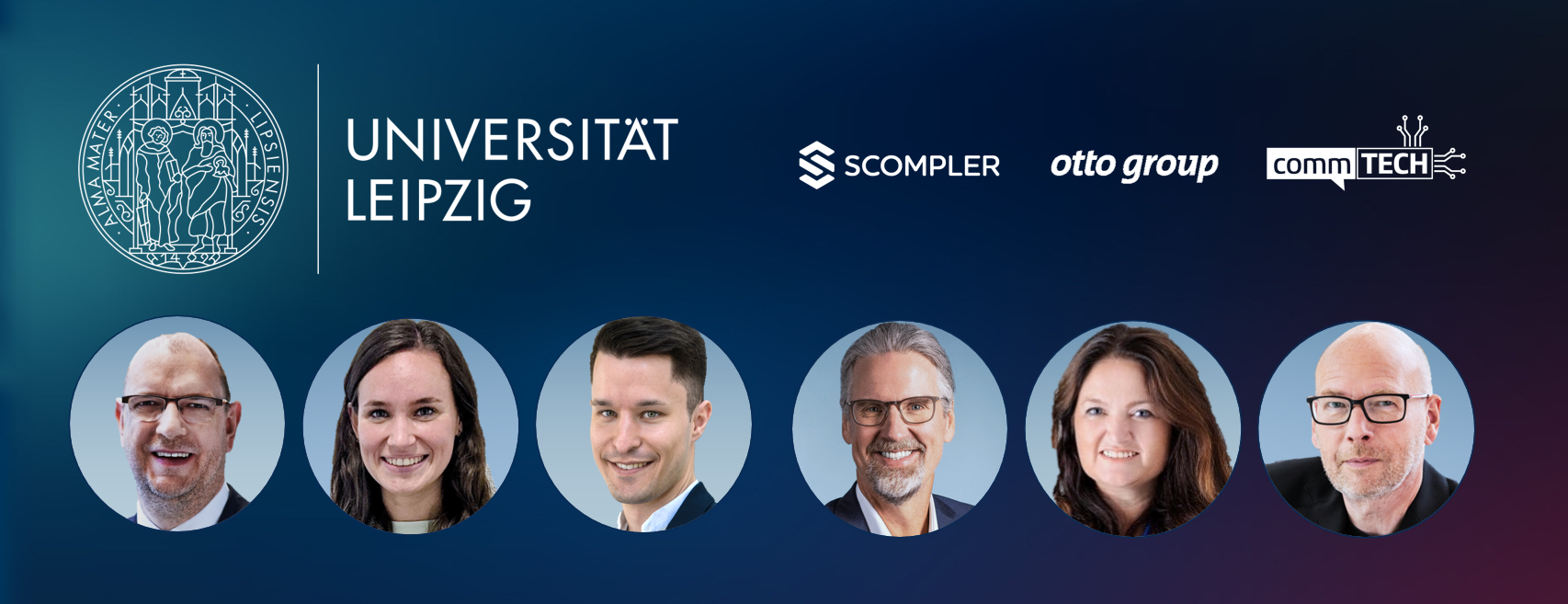Study presentation and discussion
Pitfalls and success factors in the introduction of CommTech
What is important when introducing CommTech? What does it depend on whether digital tools and technologies generate added value? Scompler was involved in a study by the University of Leipzig and the CommTech working group, which examined precisely these questions.
The study enabled the research team led by Prof. Dr. Ansgar Zerfaß, Jana Brockhaus and Fabian Saxinger to identify the key pitfalls and success factors in the introduction of CommTech. The results were presented in a webinar on June 1, 2023, in which Scompler founder, Mirko Lange, together with Annette Siragusano, Division Manager Corporate Communications at the Otto Group, presented the results from their practical perspective. The webinar was moderated by Thomas Mickeleit, former Head of Communications at Microsoft Germany and Head of AG CommTech. The recording and slides of the webinar can be found at the end of this blog post.

From left to right: Prof. Dr. Ansgar Zerfaß, Jana Brockhaus, Fabian Saxinger, Annette Siragusano, Thomas Mickeleit.
Key findings of the webinar
Managers need to address the right problems: In order to convince employees of the added value of a technology project, they must be shown what problem the project solves for them in their day-to-day work. "The added value is a central core - this 'start with why'. Why am I doing this and what problem does it solve?" says Siragusano. According to Lange, managers have a central role to play here: "The main management task here is to do the right things to solve the problems that need to be solved. Only if the manager makes it a problem to create better content, provide more substance and create benefits can a tool be perceived as added value".
A fool with a tool is still a fool: It is a fallacy to believe that the introduction of a tool alone will bring about the desired digital transformation in communication departments. "Actually, digital transformation starts independently of a tool. It starts in people's heads. A tool alone will not solve the challenges," says Siragusano. Lange also does not see the introduction of a tool as the sole driver for a successful digital transformation: "A fool with a tool is still a fool!". Nevertheless, the Scompler founder points out that the tool itself can also be a catalyst that accelerates the transformation: "For example, if the structures are developed in parallel to the introduction of a tool because you need the tool".
There is no such thing as a one-size-fits-all tool: there is no tool that can do everything, nor does it make sense. "You will always have to make compromises. Either you have one tool that can't do everything or you have lots of tools that can do everything but aren't compatible. This then reinforces the actually undesirable silos of today's communication departments," Lange points out.
Technology projects should include a change project as a vision: Technology projects fail if communications departments want to embark on a transformation process too quickly and from the outset. This is the experience of Scompler from 300 supervised technology projects. "The companies really only wanted something that would simplify their existing processes. Introducing a new process was difficult for them and overwhelmed them. And that's the crux of the matter," Lange reports from his experience. It therefore often makes sense to put the transformation and change process on the back burner for the time being and concentrate on relieving the burden on employees by simplifying processes. Lange therefore concludes: "Not every technology project has to be a change project, but every technology project should include the change project as a long-term goal, as a vision.

The webinar slides
Below you will find the webinar slides with the key findings and results of the study.